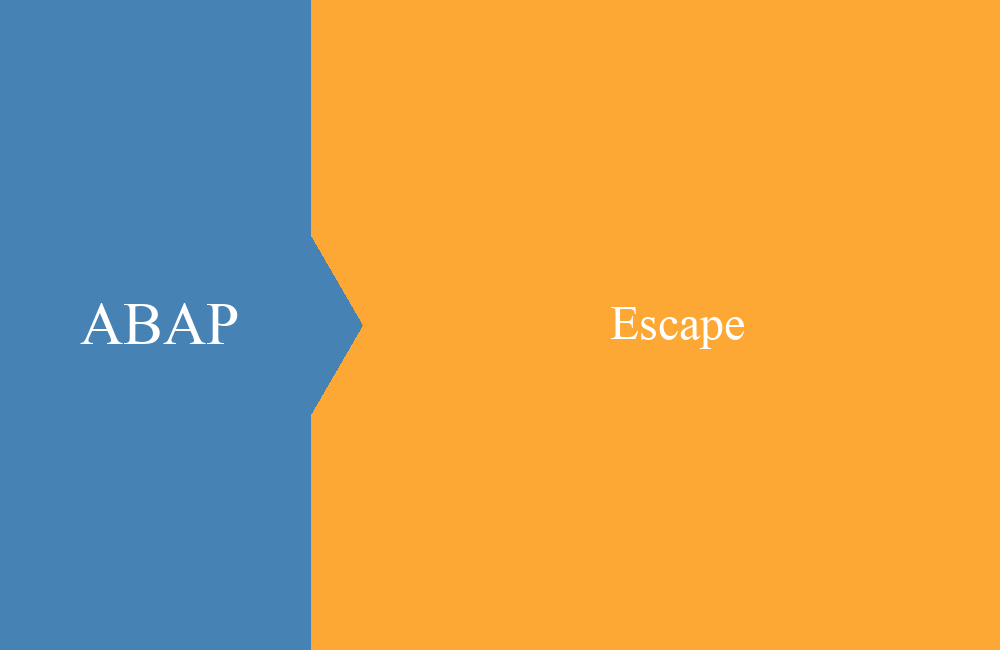
ABAP Matrix (AFM/ALM)
This article is about the ABAP Feature Matrix for developers, what the background is and how you can use it.
Table of contents
Anyone who is on LinkedIn or X/Twitter and reads our posts has probably already stumbled upon the ABAP Feature Matrix project. In this article we want to go into the background, the different variants and the usage.
Introduction
At the DSAG TechXchange we had an exchange with the community and the question came up: "Where can you actually see which features are available in which release?". You will find general information about this everywhere, in the release notes, in blog posts, in SAP examples, but never actually in one place and clearly assigned to a release. The idea then developed to create an overview of all features that are relevant for the ABAP developer.
Development
The first version of the matrix started as a simple list on our website and was still quite complex to maintain. We put the appropriate crosses in a table.
But what about the next release? Here we would have to add a column and fill the column for all existing features. Maintaining and moving it is also not that easy and we cannot correct mistakes so easily. The community then asked why not make the data available via GitHub? Since then, all matrix data has been stored in JSON format in our GitHub repository.
ABAP Feature Matrix (AFM)
The ABAP Feature Matrix (AFM) is the first prototype that is intended to display all features from version 7.40 to today in an overview. As of this release, we actually speak of Modern ABAP, as the ABAP language has developed and modernized significantly since then. These features are mapped according to the different groups, the information about them is pulled from the different configurations of GitHub.
Filter
Before the matrix is loaded, you have the option to make restrictions to influence the result and structure. Do you want to see all releases or just a specific one? Do you also want to see all categories or, for example, just the Core Data Service features? If you want to export the document, you may not need a table of contents; by default this is generated for easier navigation.
Overview
Once the matrix has loaded, you will see all features displayed in several tables.
The tables are always structured the same way, from left to right:
- Feature - The ABAP keyword or a short description of the feature the line is about.
- Wiki - A link to the description on GitHub, where you can find more information about the feature, at least one link to public SAP documentation and perhaps a short example.
- SAP Documentation - The direct link to the documentation on SAP Help or to a SAP blog. What is important to us here is that there are links to official documents.
- Release - Listing of the different releases and whether the feature is available in this on-premise release. You will also receive information about obsolete things and features that were later made available for older releases.
Usage
The feature matrix is intended to give you a quick overview of all the features across the various releases and at the same time quick access to all important information. In the Wiki area you will find a description, a link to official documents, a possible example and possibly further information if a downport is available and where you can find further information. Here's an example from the wiki:
ABAP Learning Matrix (ALM)
When developing the feature matrix, the idea of the ABAP Learning Matrix (ALM) also came up, because as a developer you are probably also interested in which features are available and new after a release change.
Filter
You can use the filter to enter your current release and the new release so that the system can determine the features.
Overview
You will then receive a table with the Delta features, the category and links to the documents. The data from the ABAP Feature Matrix serves as the basis for creating the list.
Usage
Are you currently making a transformation towards HANA or a release change to S/4 HANA 2023? The matrix is intended to give you an overview of the relevant features that are being added. At the same time, you have the opportunity to skim through the new functions at a glance and pick up the most relevant things for yourself.
Data sources
We are currently using various data sources to collect all information, and we primarily want to use official and confirmed information. Current documents are therefore:
- What's New Viewer - ABAP Platform
- ABAP Release News
- CDS Feature Matrix
- RAP - What's New
- ADT Feature Availability Matrix
Open Source
We make all information freely available in a structured manner. You can use the information freely, but we would also be happy if you collaborate on the project. Are you missing information about certain features? Did you find any errors in the matrix? Then you can send us information, open an issue or participate directly in the project.
If you want to know more about the structure of the repository, you can find more information in the project documentation, where we explain the structure and contents.
Conclusion
The ABAP Feature Matrix is not yet complete and perhaps never will be. But it already gives you a good overview of many features across the various releases.











